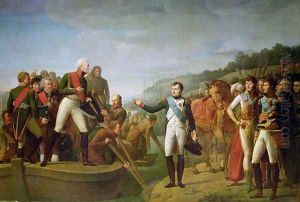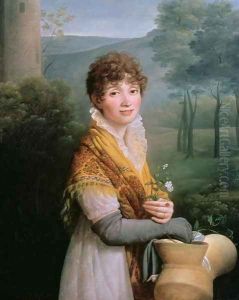Gioacchino Giuseppe Serangeli Paintings
Gioacchino Giuseppe Serangeli was an Italian painter, born in Rome in 1768. He is known for his work in the neoclassical style, which was prevalent during the late 18th and early 19th centuries. Serangeli initially trained under the guidance of Domenico Corvi, a respected painter of his time. He also found significant influence in the works of Jacques-Louis David, the leading French neoclassical painter, whose style had a profound impact on Serangeli's development as an artist.
Having been deeply inspired by the ideals of the neoclassical movement, Serangeli's work often reflected the emphasis on simplicity, clarity, and classical themes that characterized the era. His paintings typically featured historical and mythological subjects, executed with precise lines, a restrained color palette, and attention to detail that highlighted the idealism of the human form. Serangeli's contributions to art were recognized in his time, and he was known to have a successful career, receiving commissions from prominent patrons.
Despite his success, however, Serangeli is not as widely remembered today as some of his contemporaries. His works can be found in various art collections and have been exhibited in galleries that specialize in neoclassical art. Unfortunately, much of Serangeli’s life outside of his artistic production remains less documented, and as a result, he remains a somewhat obscure figure in the annals of art history.
Serangeli lived through a dynamic period in European history, which included the French Revolution and the Napoleonic Wars. These events had a significant effect on the cultural landscape of Europe and thus influenced the themes and expressions of artists of the time, including Serangeli. He passed away in 1852, leaving behind a legacy as a skilled practitioner of neoclassical painting, with his works continuing to be appreciated by art historians and enthusiasts of the neoclassical style.

